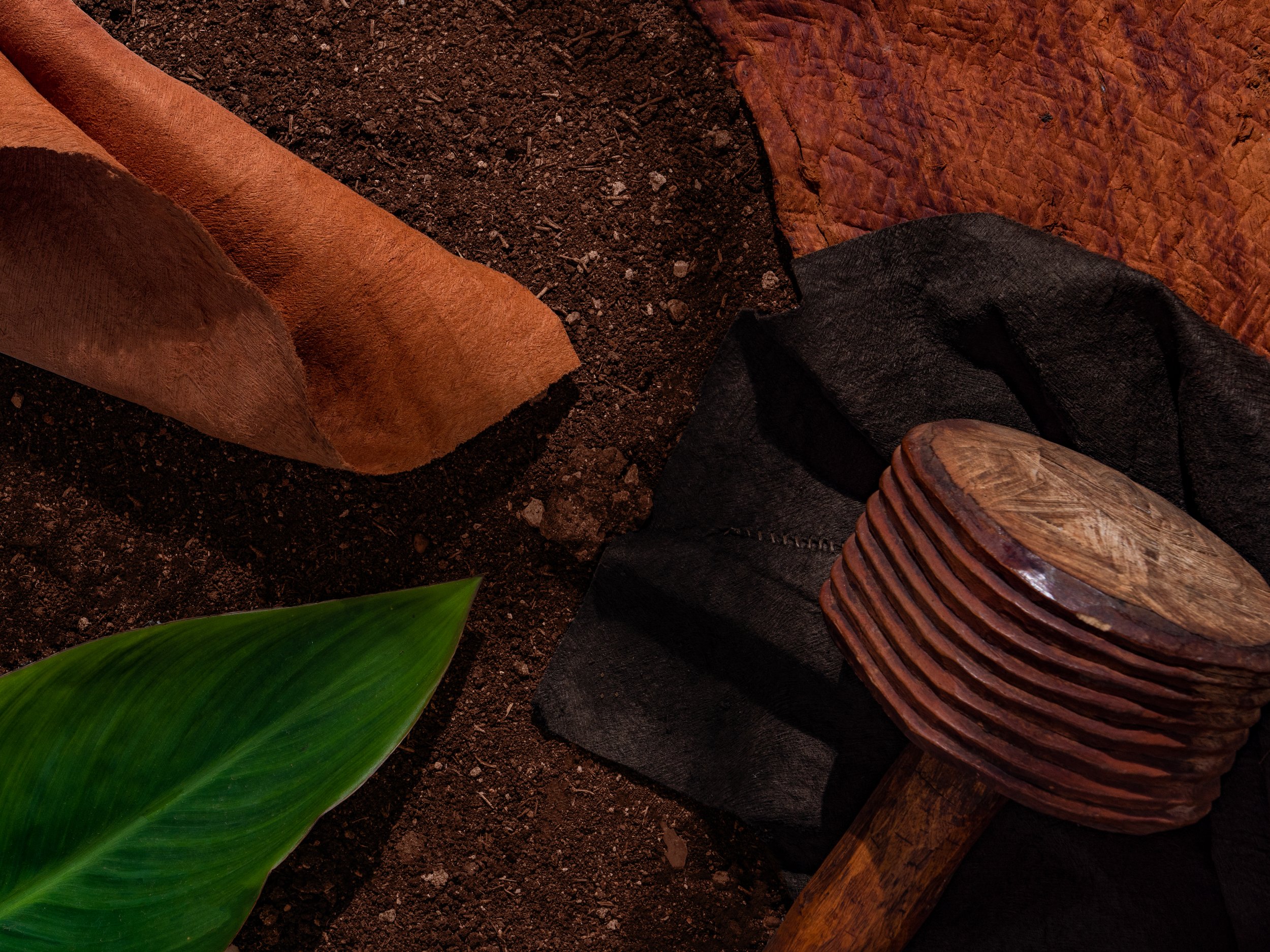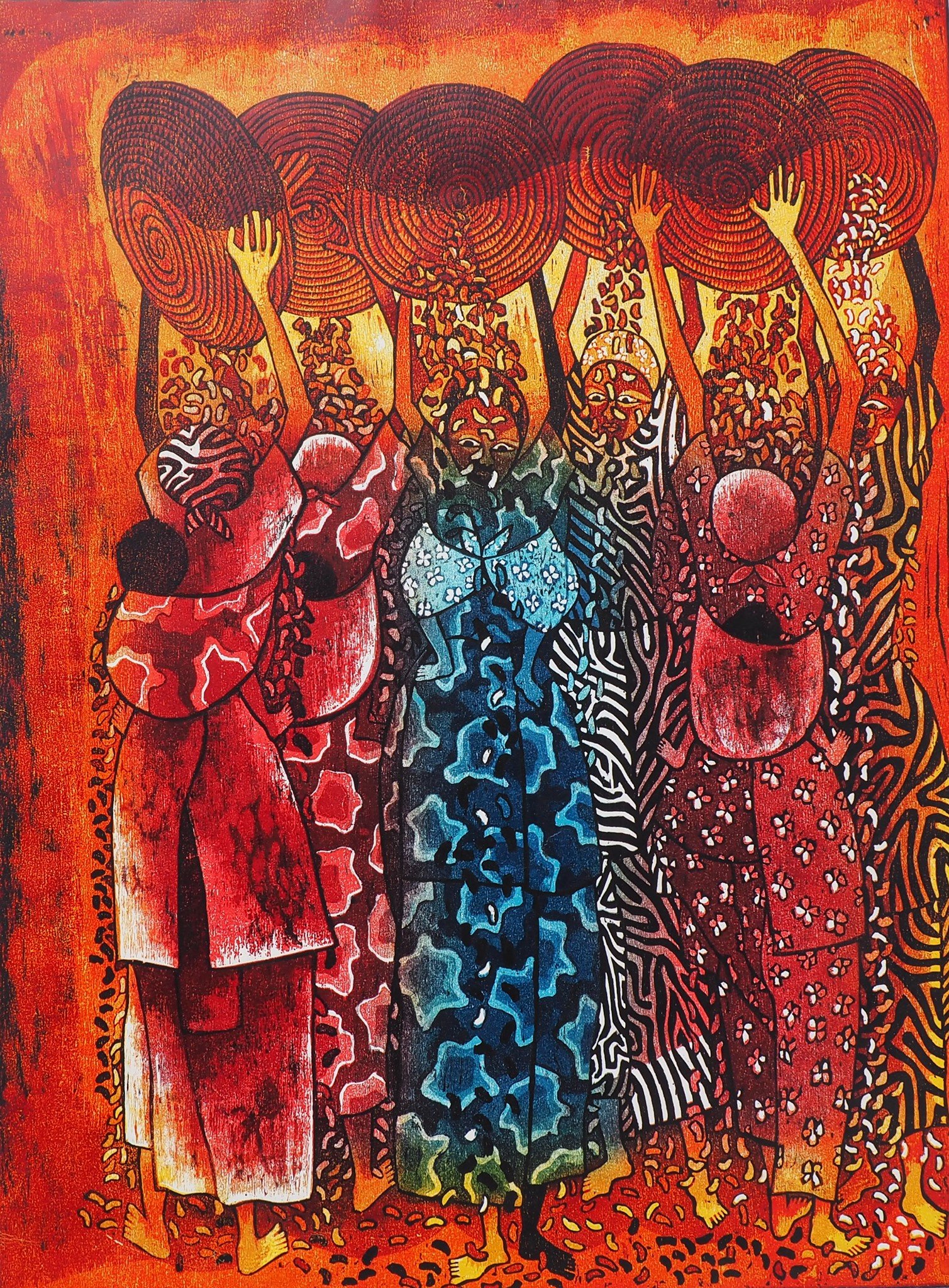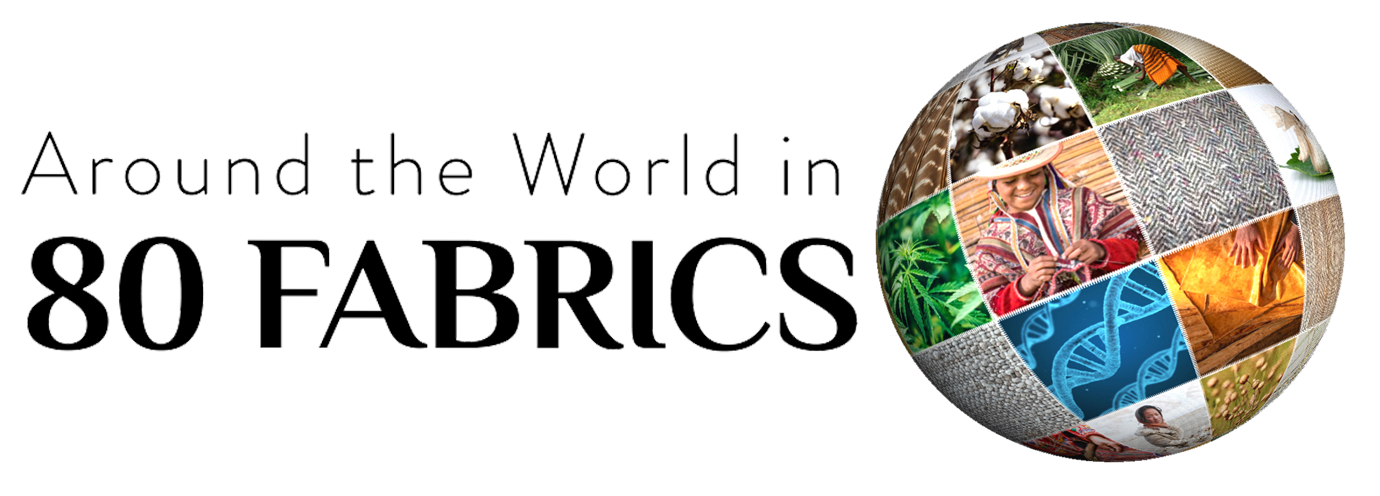
FABRIC: BARKCLOTH
Region: Uganda
Fabric Name:
Lubugo (in Lugandan) common name is Bark Cloth
Origin:
From the Ficus natalensis tree, also called Mutuba in Lugandan.
Who made our fabric:
Bukomansimbi Organic Tree Farmers Association, Bukomansimbi, Uganda
Natural history and ecology:
One mutuba tree can yield 30 -40 cloths over its lifetime. Once the bark is stripped, it grows back within a year.
What makes this so special: Ugandan barkcloth, aka Lubugo, comes from the inner bark of the mutuba tree Ficus natalensis. This material has supported the economic, environmental, and cultural health of the Buganda community for more than 700 years. A recent study found it even guards against bacterial MRSA. Trees can be harvested annually for up to 80 years and planting them restores local forests, sinks carbon and supports multiple food crops.
A 700 year old cloth that has clothed kings…now finds it way onto the runways.
Award winning bark cloth maker, Paul Bukenya Katamiira has a family history of making barkcloth…dating back 300 years!
In 2021, Paul was awarded a Janzi Award, a national honor in Uganda, for his outstanding contribution to arts and crafts.
More about this fabric…

“Besides my family, I think I have dedicated my remaining life of art to promoting barkcloth. It requires my kind of passion to contribute to its promoting to where it should be in the history of mankind.”
— Fred Mutebi/Barkcloth
Fred Mutebi
Fred Mutebi is an artist and bark cloth maker located in Kampala Uganda. His life with barkcloth shows the cultural importance, historical evolution, and broad possibilities of what you can do with the fabric. As a child, his grandmother used to use Bark Cloth as bedsheets and a way to cover up at night. There is scientific evidence showing that barkcloth can protect against mosquitos, so it helped Fred go miliaria free throughout his childhood! However, at this time Fred despised barkcloth, as when he was a child, anyone who used it would be related to witchcraft. So his grandmother would use it in secret deep in the village. As life moved on, the cloth became more accepted and sacred fabric, and Fred had been looking for materials to make prints with. He had the benefit of going through the education system in Uganda, and once he was out of college, his artwork began to sell very well using barkcloth as the paper for his prints. Fred has dedicated his work to make sure bark cloth persists as new generations learn to make the fabric. His artwork has crossed into Germany, the US, Japan, and many other countries spreading awareness of his message across the globe.






